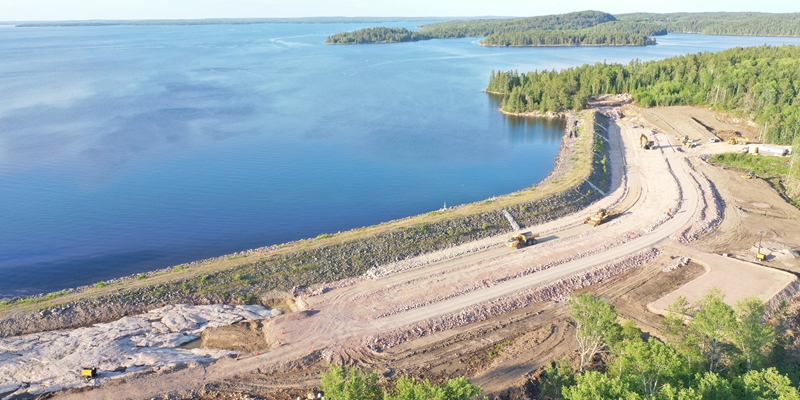
KGS presenting at GeoCalgary
KGS is a proud sponsor of GeoCalgary, the 75th annual conference of The Canadian Geotechnical Society taking place October 2 - 5, 2022. Throughout the conference, make sure to check out KGS employees presenting on a variety of topics.
Construction and performance monitoring of a new remedial dam in northwestern Ontario
Wednesday, October 5, 2022, 10:30 a.m. - 12:00 p.m.
Presented by David Kurz
The remedial dam, located in northwestern Ontario, is one of a series of block dams constructed for retention of the headwater. It was originally constructed in the 1950’s as an earthen retention dam in a rock saddle partly filled with 0 m to 9 m overburden of firm fissured Lake Agassiz clay overlying alluvial and fluvial silty sand, gravel, cobbles, and boulders over a granitic bedrock. In 2014 the dam experienced a slump movement on the upstream slope of the eastern section of the dam. A previous paper presented at GeoNiagara 2021 discussed the original construction, site investigations, and detailed design of the remedial dam. This present GeoCalgary 2022 companion paper discusses the instrumentation, construction using the Observational Approach, select construction challenges and the solutions that were developed and implemented. Construction was completed and the new dam was commissioned in Fall 2019. Construction and post-construction instrumentation monitoring during operation is presented for nearly three years of data.
Climate Warming and Relocation and Redesign of Northern Winter Roads
Tuesday, October 4, 2022, 3:30 p.m. - 5:00 p.m.
Presented by Ryan Dobson
This paper presents a case study of the relocation and redesign of winter roads necessitated by climate change and warming. The case study focuses on the relocation and redesign of a winter road that is approximately 305 km long and runs east-west from Fort Severn, ON to Shamattawa, MB. Built historically using the conventional method of constructing on flat terrain through organics/muskeg (bog and fen) and lakes, the organic terrain is no longer freezing in the warmer winters caused by climate change. Climate sensitive construction strategies were developed during this study to mitigate the impact of constructing on muskeg and permafrost affected terrain.
Three alternative winter road alignments were evaluated using surficial geology and terrain analysis. Two alternative route options were developed along the coastline of the Hudson Bay to utilize the existing beach ridges which provide a high ground option versus the organic terrain on the existing route. A third alternative option was developed along the Severn River through Northern Ontario using low-lying fluvial deposits that provide the best opportunity for a competent subgrade and borrow materials within the Hudson Bay Lowlands. A weighted percentage method was used to evaluate all route options and found that the alternative routes along the Hudson Bay coastline were the most feasible in terms of design and construction, operation and maintenance, cost, and community preference. The existing route was deemed to be infeasible technically, compared to the alternative alignments.
Quantitative and qualitative characterization of permafrost sites using surface waves
Poster session: Tuesday, October 4, 2022, 3:30 p.m. - 5:00 p.m.
Presented by Hongwei Liu
The adverse effects of climate warming on the built environment in (sub)arctic regions are unprecedented and accelerating. According to Canada's Changing Climate Report (2019), in the Arctic regions, temperatures have been warming at approximately twice the rate of the rest of the world. This drastic trend in climate warming will no doubt affect permafrost temperatures and conditions, continued rise in greenhouse gas emissions, and further adding to the high cost of development in northern regions. Planning and design of climate-resilient northern infrastructure as well as predicting deterioration of permafrost from climate model simulations require characterizing permafrost sites accurately and efficiently. In this paper, we propose a novel algorithm for analysis of surface waves to quantitatively estimate the physical and mechanical properties of a permafrost site. In-situ surface wave measurements can reveal the experimental dispersion relations of different Rayleigh waves from which relevant properties of a permafrost site can be derived by means of our proposed hybrid inverse and multi-phase poromechanical approach. Our proposed technique can be potentially used in early detection and warning systems to monitor infrastructure impacted by permafrost-related geohazards, and to detect the presence of layers vulnerable to permafrost carbon feedback and emission of greenhouse gases into the atmosphere.
More info about GeoCalgary: https://geocalgary2022.ca/
